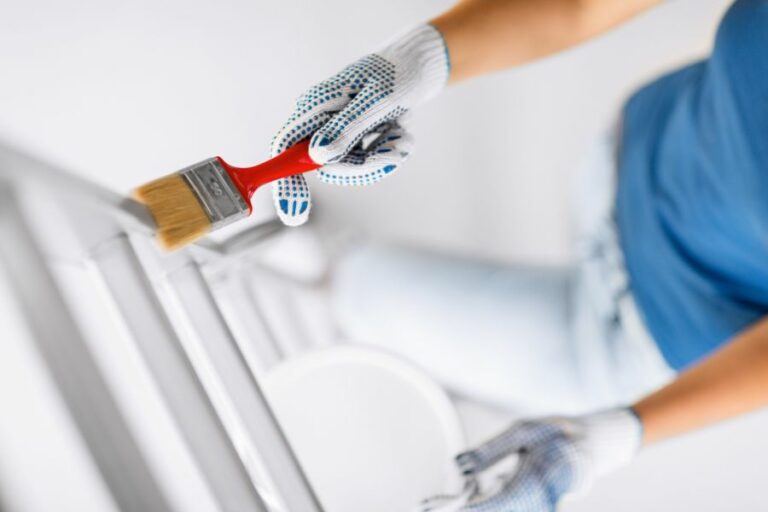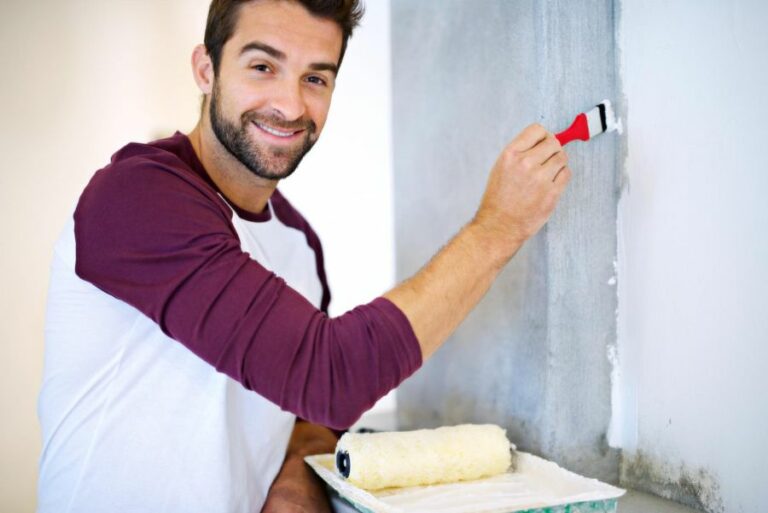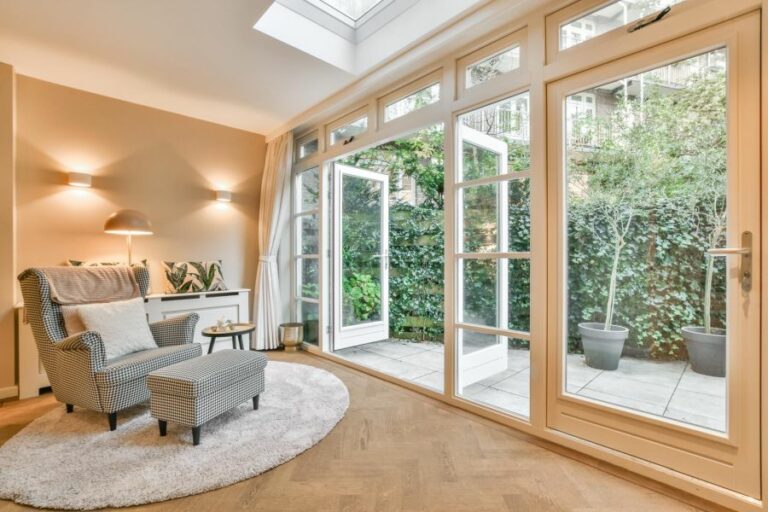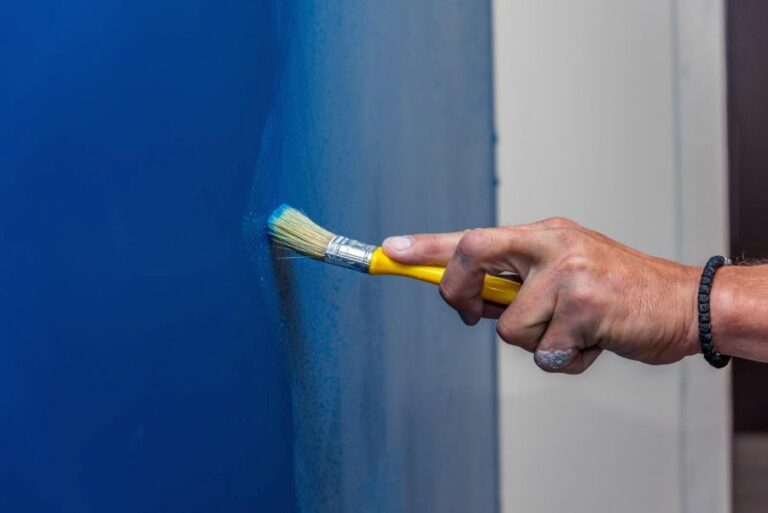Primer For Indoor Painting Projects, 25 Things You Should Know
Embarking on an indoor painting project can be exciting and daunting, especially if this is your first time. I’m here to guide you every step of the way and ensure that you’ll achieve professional results. With just some planning and the right techniques, you’ll effortlessly transform your space into something truly stunning.
Primer for indoor painting projects:
Indoor painting primers are essential for a successful paint job, providing improved paint adhesion, stain-blocking, and uniform color. There are three main types of primers: water-based (latex), oil-based, and shellac-based. Water-based primers are versatile and eco-friendly, oil-based primers offer excellent adhesion and stain-blocking on wood and metal surfaces, and shellac-based primers excel at heavy stain-blocking.
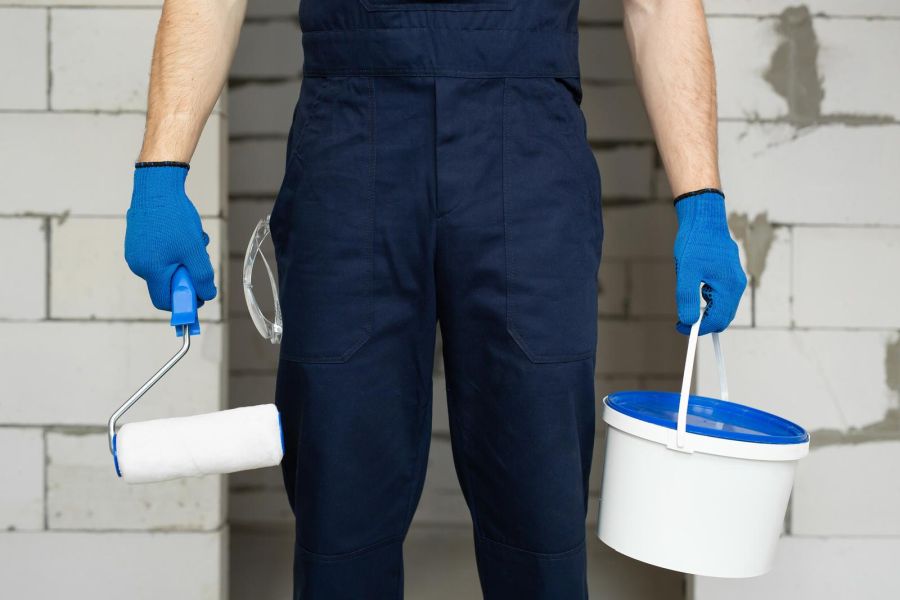
Ready to revamp your living space with a fresh coat of paint? Our primer for indoor painting projects has got you covered! Learn expert tips and tricks, paint selection, and proper application techniques to transform your home easily. Read on to kickstart your painting journey!
Contents
- 1 Ultimate Guide to Indoor Painting Primers
- 2 Choosing the Right Interior Painting Primer
- 3 The Importance of Primers in Indoor Painting
- 4 Comparing Indoor and Outdoor Primers: Key Differences
- 5 The Role of Primer in Preparing for a Paint Job
Ultimate Guide to Indoor Painting Primers
Painting the interior of your home can feel like a daunting task, but with the right knowledge and tools, it can be a rewarding and satisfying process. Applying the proper primer is one of the most crucial steps in preparing for a successful project.
• Understanding the Purpose of Primer
Before diving into the types of primers available, it’s important to understand the purpose of primer and how it can impact the final result of your paint job. Applying a primer before painting helps:
- Improve paint adhesion: Primers create a uniform, slightly textured surface for the paint to adhere to, ensuring a more durable finish.
- Block stains: Some primers contain stain-blocking properties that prevent underlying stains, such as water or smoke damage, from bleeding through the paint.
- Hide color: Primer provides a base coat that can help hide the previous color of the wall, making it easier to achieve the desired final color.
- Prevent flashing: Primers help reduce the appearance of flashing, which occurs when the difference between the texture of the paint and the texture of the wall is visible.
• Types of Primers for Indoor Painting Projects
Several types of primers are on the market, each designed for specific surfaces and conditions. Here are some of the most common types of primers and their ideal uses:
1. Water-Based (Latex) Primers
Water-based or latex primers are a versatile option and can be used on a wide variety of surfaces, including drywall, plaster, and masonry. They:
- Dry quickly and have low levels of volatile organic compounds (VOCs), which makes them an eco-friendly choice.
- Are easy to clean up with soap and water, making them ideal for DIY projects.
- Can be used under both latex and oil-based paints.
The EPA recommends using water-based primers with low-VOC formulations to reduce indoor air pollution and associated health risks. Latex primers are not suitable for high-humidity areas or surfaces with existing stains, as they do not offer the same level of stain-blocking as other primer types.
2. Oil-Based Primers
Oil-based primers have long been the go-to option for professional painters, as they offer excellent adhesion and stain-blocking. They are best suited for:
- Bare wood surfaces, as they prevent the bleed-through of tannins and fill in wood grain.
- Metal surfaces, including doors and railings.
- Chalky surfaces, such as previously painted masonry.
However, oil-based primers have a strong odor, longer dry time, and are harder to clean up, requiring the use of mineral spirits or paint thinner. They also contain higher levels of VOCs than water-based primers.
3. Shellac-Based Primers
Shellac-based primers excel at stain-blocking, particularly heavy stains such as water, smoke, or nicotine. They provide excellent adhesion and:
- Dry quickly, usually within an hour.
- Can be used under both latex and oil-based paints.
- Are suited for both interior and exterior applications.
The primary drawbacks of shellac-based primers are their strong odor and challenging clean-up, as they require denatured alcohol to remove.
• Choosing the Right Primer for Your Project
To choose the best primer for your specific indoor painting project, consider the following factors:
- Surface: Analyze the surface you are going to paint. Water-based primers work well for many surfaces but may not offer the necessary stain-blocking protection for certain projects. Oil-based primers are likely better for wood and metal surfaces, while shellac-based primers should be used when heavy stain-blocking is needed.
- Existing color: If you plan to change the color of the wall dramatically or cover a dark color, use a primer to ensure a uniform final color.
- Sheen level of paint: If you are using a gloss or semi-gloss paint, a primer can help achieve an even sheen across the surface.
- VOC level: For those who are sensitive to odors or concerned about indoor air quality, opt for low-VOC, water-based primers.
• Tips for Applying Primer
Once you have chosen the right primer for your indoor painting project, follow these tips for an optimal application:
- Ensure the surface is clean, dry, and free of dust, dirt, or grease.
- Use the proper applicator (brush, roller, or sprayer) to suit the surface and primer type.
- Apply the primer in a thin, even layer, following the manufacturer’s recommended coverage and dry time.
- Inspect the primed surface for imperfections or areas requiring additional coats.
- Wait until the primer is fully dry before applying the paint.
By following these guidelines and selecting the appropriate primer, you will set yourself up for a successful indoor painting project that results in a durable and beautiful finish.
Choosing the Right Interior Painting Primer
A primer is a preliminary coating that is applied before painting. It serves as a foundation for the paint, ensuring proper adhesion and durability. Selecting the right primer for your interior painting project is essential to achieving professional-looking results.
• The Importance of Primer in Interior Painting
Primer is crucial in achieving a quality finish. Its primary function is to create a uniform surface for the paint to adhere to, making it more durable and long-lasting. Properly primed surfaces ensure:
- Even color and sheen distribution
- Improved paint adhesion
- Enhanced stain blocking
- Fewer paint coats needed
- Protection for the underlying surface
• Types of Interior Primers
Several types of interior primers are available, each with specific applications and advantages. Here is a brief overview of the most common types of primers:
1. Oil-based Primer
Oil-based primers are suitable for various surfaces, such as unpainted wood, stained, and painted surfaces needing a new coat. They offer excellent adhesion and stain-blocking properties. Some advantages of oil-based primers are:
- Penetrates and seals porous surfaces effectively
- Resists peeling and cracking
- Suitable for both interior and exterior applications
However, oil-based primers produce strong odors, are slow-drying, and require mineral spirits for cleanup.
2. Latex Primer
Latex, or water-based primers, are popular for interior painting projects due to their ease of use, quick drying time, and low odor. They are best for:
- New drywalls
- Bare wood
- Previously painted surfaces
- Softwood, galvanized metals, or aluminum
They are not recommended for surfaces exposed to high humidity or heavy moisture.
3. Shellac Primer
Shellac primers are highly effective in covering stains and odors. They offer excellent adhesion, speedy drying time, and are compatible with most paint types. The best uses for shellac primers are:
- Sealing knots and sap streaks in new wood
- Covering severe water, smoke, or nicotine stains
- Blocking strong odors
They are not ideal for surfaces requiring flexibility or areas exposed to high humidity or moisture.
• Tips for Choosing the Right Interior Primer
To determine the right primer for your project, consider the following factors:
– Surface Material
The surface material and condition dictate the type of primer needed. For example:
- New drywall: A latex primer is recommended for its ease of use and compatibility.
- Stained surfaces: Oil-based or shellac primers perform best for blocking stains.
- Unpainted wood: Oil-based primers penetrate the wood effectively and provide good adhesion.
– Stain Coverage
If covering stains is a primary concern, choose a primer with excellent stain-blocking properties, such as oil-based or shellac primers.
– Odor Sensitivity and Drying Time
Oil-based primers emit strong odors and take longer to dry. Consider a latex or shellac primer if you are sensitive to fumes or need a faster drying time.
– Ease of Cleanup
Water-based primers like latex are easier to clean up with only soap and water. Oil-based and shellac primers require mineral spirits or denatured alcohol for cleanup.
• Personal Recommendations
Based on my experience, I would recommend the following primers for specific applications:
- New drywall or previously painted surfaces: A latex primer offers low odor, quick drying time, and easy cleanup.
- Stained surfaces or unpainted wood: Use an oil-based primer for its superior stain-blocking and adhesion properties.
- Severe stains and odors: A shellac primer is effective in masking challenging stains and strong odors.
In conclusion, selecting the right primer for your interior painting project is vital to ensure a professional finish. When choosing the ideal primer, evaluate your surface, project requirements, and personal preferences.
For more information on primers and paint, consult resources like the Paint Quality Institute website.
The Importance of Primers in Indoor Painting
• The Importance of Primer in Interior Painting
A common inquiry homeowners have when it comes to interior painting is whether or not they should apply a primer.
Primer is a preparatory coating that provides an even, stable base for the topcoat of paint, allowing it to adhere properly and last longer. It also seals the surface, preventing stains and issues such as mildew or mold from showing through the paint.
Based on my experience as a professional painter, I highly recommend using primer when painting indoors.
• Situations that Call for Primer
While primer may not always be necessary, certain situations call for its use before applying the topcoat of paint. Some of these situations include:
– Working with Porous Surfaces
Primer is essential for porous surfaces such as new or untreated drywall, wood, or masonry. These materials absorb paint quickly, resulting in an uneven finish. Applying a primer seals the surface and ensures that the topcoat of the paint adheres properly and evenly.
– Covering Dark Colors
Using a primer is highly recommended when transitioning from a dark to a lighter color. This will prevent the previous color from showing through the new paint and save you from applying multiple coats of paint to cover the old color completely.
– Hiding Stains and Odors
In the case of water stains, smoke damage, or stubborn odors on walls, a stain-blocking primer is recommended. Stain-blocking primers are designed specifically to cover and seal these issues, allowing for a fresh, clean finish when painting.
– Adhesion Issues
If you paint a smooth or glossy surface, a primer is advised for better adhesion. This includes surfaces such as glossy paint, metal, or plastic. Primer gives the topcoat something to grip onto, ensuring that the paint does not flake or peel off over time.
– Repairing Damaged Surfaces
If you have repaired a wall due to holes, cracks, or other damage, you should use a primer before painting. This will help blend the repaired area with the rest of the wall, ensuring a smooth, even finish.
• Types of Primers for Interior Painting Projects
Choosing the right primer for your painting project is essential for achieving the best results. The following are common types of primers and their applications:
– Oil-Based Primers
Oil-based primers are best for use on bare wood and can also be used on metal surfaces. They are highly effective in sealing porous surfaces and preventing stains from bleeding through the paint. However, these primers tend to have a strong odor and take longer to dry compared to other types.
– Latex (Water-Based) Primers
Latex primers are the most popular choice for interior painting projects due to their quick drying time and easy clean-up. They work well on drywall, softwoods, and non-greasy surfaces. Latex primers are also more resistant to peeling and cracking.
– Shellac Primers
Shellac primers excel in sealing stains, including water, smoke, and rust. They also serve as a highly effective odor blocker. However, these primers are less flexible than oil-based or latex primers, making them less suitable for surfaces prone to expansion and contraction, such as wood.
• Tips for Applying Primer
When using primer for your interior painting project, consider following these tips to achieve the best results:
- Clean the surface thoroughly before applying primer. This ensures proper adhesion and prevents contaminants from affecting the paint job.
- Choose the appropriate type of primer for your surface and project needs. This ensures proper performance and overall durability.
- Apply the primer evenly using a brush or roller. Make sure to cover the entire area, ensuring consistent adhesion of the topcoat.
- Allow the primer to dry completely before applying the topcoat. Depending on the type of primer used, this may take anywhere from a few hours to a full day. Consult the manufacturer’s instructions for the recommended drying time.
In conclusion, using a primer for interior painting projects is highly recommended in most situations. Primer provides a solid base for the paint to adhere to, ensures an even finish, and helps prevent staining and other issues.
Taking the time to prepare your surfaces and use the correct primer properly can significantly improve the outcome of your painting project. For more information about primer and its benefits in interior painting projects, visit the Paint Quality Institute’s website.
Scenario | Recommendation |
|---|---|
Painting over a previously painted surface with the same or similar color | Primer may not be necessary |
Painting a lighter color over a darker color | A primer is recommended to ensure proper coverage |
Painting over stains, marks, or water damage | A stain-blocking primer is recommended to prevent the stains from bleeding through the new paint |
Painting new, unsealed, or patched drywall | A drywall primer is recommended to ensure proper sealing and adhesion of the new paint |
Painting over glossy or high-gloss paint | A bonding primer is recommended to help the new paint adhere properly |
Comparing Indoor and Outdoor Primers: Key Differences
When it comes to painting projects, one of the major considerations is choosing the right primer. Homeowners and professional painters alike may wonder if there is a significant difference between indoor and outdoor primers.
• Indoor and Outdoor Primer: The Fundamental Differences
– Purpose
Indoor primers are formulated to be used inside homes and other enclosed spaces, where moisture levels and air circulation are controlled. The main function of these primers is to provide a smooth and consistent base for various types of paint, ensuring a professional-looking and long-lasting finish.
On the other hand, outdoor primers are specifically designed to withstand harsh weather conditions and other external elements. These primers create a stable base for the paint and offer added protection against moisture, UV rays, and temperature fluctuations.
– Formulation
Indoor primers typically use water-based or latex-based formulations, which are less harmful to indoor air quality and easier to clean up after use. These primers also have low-VOC (volatile organic compound) and low-odor properties, making them more suitable for use within enclosed spaces.
Outdoor primers usually contain oil-based or alkyd-based formulations, which provide increased durability and resistance against outdoor environmental factors. These primers may have higher VOC and odor levels and, thus, may not be ideal for indoor applications where air circulation is limited.
– Performance Characteristics
Adhesion
Both indoor and outdoor primers are designed to adhere well to various surfaces. However, outdoor primers generally have enhanced adhesion capabilities compared to their indoor counterparts.
This allows the primer to bond better to surfaces that may be exposed to moisture or temperature fluctuations, ensuring long-lasting coverage.
Flexibility
Outdoor primers usually have greater flexibility than indoor primers, as they are formulated to expand and contract with the surface they are applied to. This ability helps prevent cracking and peeling of the paint, especially when exposed to fluctuating weather conditions.
Resistance to Environmental Factors
Outdoor primers are specifically designed to resist factors such as UV rays, moisture, or temperature extremes, a feature that is not required of indoor primers. This resistance helps protect the underlying surface, and the paint applied on top, making the paint job last longer.
• Recommendations from Personal Experience
– Choose the Right Primer for Your Project
Based on the discussed differences, choosing the right primer for your project is essential. If you’re tackling an indoor paint job, an indoor primer with low-VOC and low-odor properties will be suitable.
Conversely, an outdoor primer with enhanced resistance against environmental factors will be necessary if you’re working on an outdoor project.
– Read the Product Label
Always read the product label and datasheet before purchasing any primer. This information will provide you with critical details about the primer’s intended use, its formulation, and its performance characteristics. Furthermore, it can offer guidance on surface preparation and application methods.
– Safety Precautions
Remember to follow the recommended safety precautions when using primers, particularly outdoor primers with higher VOC levels. These include wearing protective gear, ensuring proper ventilation, and disposing of used materials responsibly.
– Consult with Professionals
When in doubt or faced with a painting situation that is out of your expertise, it is always wise to consult with professionals. A knowledgeable painter or your local paint store representative can provide advice on choosing the right primer and offer tips on the best application techniques.
• Additional Resources
To learn more about primers and their role in painting projects, you can visit the U.S. Environmental Protection Agency (EPA) website. The EPA provides valuable resources about selecting low-VOC paints and primers, as well as tips on improving indoor air quality during painting projects.
In conclusion, the answer to the question, “Is there a difference between indoor and outdoor primer?” is a resounding yes. Understanding these differences and selecting the appropriate primer for your project will help ensure your paint job is beautiful, durable, and long-lasting.
Factors | Indoor Primer | Outdoor Primer |
|---|---|---|
Function | Used for interior surfaces such as walls, ceilings, and furniture. | Used for exterior surfaces such as siding, fences, and decks. |
Resistance | Primer resistance to elements is not as important for indoor use. | Outdoor primers need to be more resistant to weather, UV rays, and temperature fluctuations. |
Moisture Protection | Indoor primers are less focused on moisture protection compared to outdoor counterparts. | Outdoor primers are designed to provide better moisture protection to prevent mold and mildew growth. |
Adhesion | Designed for adhesion to various indoor surface materials such as drywall and wood. | Requires stronger bonding agents to ensure adhesion to different outdoor surface materials exposed to various environmental conditions. |
VOCs (Volatile Organic Compounds) | Indoor primers usually have lower levels of VOCs to maintain better indoor air quality. | Some outdoor primers may have higher VOC content, which is less of a concern in outdoor environments. |
The Role of Primer in Preparing for a Paint Job
A commonly asked question in the world of painting and home improvement is whether or not a primer is necessary before applying a fresh coat of paint. The simple answer to this question is: it depends.
• What Is a Primer and Why Is It Important?
A primer is a preparatory coating that is applied to surfaces before painting. It is designed to enhance the adhesion of the paint to the surface, which ensures better coverage and longevity of the final paint job.
Primers also help to create a consistent base and can hide imperfections, stains, or discoloration on a surface, leading to a more professional and attractive finish.
– Benefits of Using a Primer
- Improves Paint Adhesion: Primer provides a consistently even surface for the paint to adhere to, leading to a longer-lasting paint job.
- Enhances Color Quality: Primers help to prevent colors from appearing patchy or uneven by providing a consistent, neutral base for the paint to be applied on.
- Reduces Number of Coats: Applying primer can reduce the number of paint coats needed, saving both time and money.
- Seals Porous Surfaces: Primers help to seal porous surfaces, such as wood or new drywall, allowing for a more even application of paint.
- Blocks Stains and Odors: Some primers are specifically formulated to block stains, odors, and contaminants, ensuring a fresh finish.
• When Is Primer Necessary?
- Painting Over a Dark Color: If you’re painting a lighter color over a darker one, applying a primer will help in preventing the darker color from showing through.
- Bare Wood: Bare wood is porous, and applying primer helps to seal the wood, prevent tannin bleed, and ensure better paint adhesion.
- New Drywall: New drywall is also porous and can absorb paint unevenly. Applying primer creates a consistent base for the paint, resulting in a more even finish.
- Glossy or Slick Surfaces: Paint may struggle to adhere to glossy or slick surfaces, such as glossy paint or high-gloss finishes. Using a primer can help improve paint adhesion on these surfaces.
- Stains or Odors: If your surface has stains, marks, or odors, using a primer that is specifically designed to block these issues will give a cleaner finish.
- Repainting After Major Repairs: When repainting after major repairs or surface changes, applying a primer can help to achieve a more even and professional finish.
According to the Paint Quality Institute, the use of primer is crucial in many situations, and they recommend using primer 90% of the time.
• When Can Primer Be Skipped?
- Painting Over a Similar Color: If you’re repainting with a similar color, a primer may not be necessary, particularly if you’re using high-quality paint.
- Touch-Ups: If you’re only touching up small areas of paint on a surface, using a primer is typically not necessary.
- Paint-and-Primer-in-One Products: Some paint products include primer as part of their formula, making an additional primer layer unnecessary. However, be sure to evaluate the specific needs of your project and choose a product that covers those needs.
• So, Is Primer Necessary Before Painting?
In conclusion, the necessity of a primer depends on various factors, such as the surface being painted, the paint being used, and the desired finish. In many cases, using a primer is a good investment, as it ensures a longer-lasting and more professional appearance.
However, there are situations where using a primer may not be necessary. Consider your specific project and its unique needs when deciding whether to use a primer before painting.

